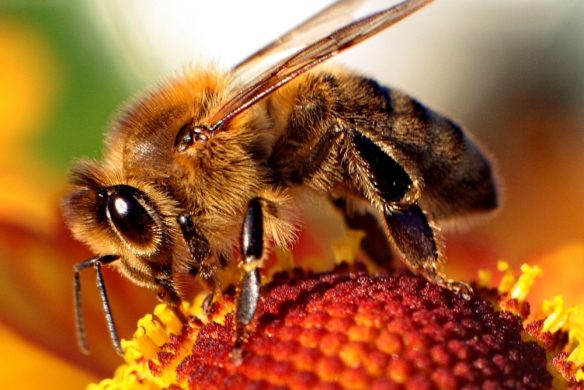26. februar 2016
Læsetid: 3 min
Det skriver Intergovernmental Science-Policy Platform on Biodiversity and Ecosystem Services (IPBES) i en pressemeddelelse fredag.
IPBES leverer på samme måde som FN’s Klimapanel videnskabelig viden til beslutningstagere.
Kuala Lumpur, February 26, 2016: A growing number of pollinator species worldwide are being driven toward extinction by diverse pressures, many of them human-made, threatening millions of livelihoods and hundreds of billions of dollars worth of food supplies, according to the first global assessment of pollinators.
However, the assessment, a two-year study conducted and released today by the Intergovernmental Science-Policy Platform on Biodiversity and Ecosystem Services (IPBES), also highlights a number of ways to effectively safeguard pollinator populations.
The assessment, titled Thematic Assessment of Pollinators, Pollination and Food Production and the first ever issued by IPBES, is a groundbreaking effort to better understand and manage a critical element of the global ecosystem.
It is also the first assessment of its kind based on the available knowledge from science as well as indigenous and local knowledge systems.
IPBES was founded four years ago with 124 member nations to form a crucial intersection between international scientific understanding and public policy making.
Pollinators are economically, socially and culturally important
"Pollinators are important contributors to world food production and nutritional security," said Vera Lucia Imperatriz Fonseca, Ph.D., co-chair of the assessment and Senior Professor at University of São Paulo.
“Their health is directly linked to our own well-being.”
There are more than 20,000 species of wild bees alone, plus many species of butterflies, flies, moths, wasps, beetles, birds, bats and other animals that contribute to pollination.
Pollinated crops include those that provide fruit, vegetables, seeds, nuts and oils. Many of these are important dietary sources of vitamins and minerals, without which the risks of malnutrition might be expected to increase.
Several crops also represent an important source of income in developing countries from, for example, the production of coffee and cocoa.
"Without pollinators, many of us would no longer be able to enjoy coffee, chocolate and apples, among many other foods that are part of our daily lives," said Simon Potts, Ph.D., the other assessment co-chair and Professor of Biodiversity and Ecosystem Services, School of Agriculture, Policy and Development, University of Reading, UK
More than three-quarters of the world's food crops rely at least in part on pollination by insects and other animals.
Billions worth of food
Between US$235 billion and US$577 billion worth of annual global food production relies on direct contributions by pollinators.
Chocolate, for example, is derived from cacao tree seed (annual world cocoa bean crop value, US$5.7 billion). Cecidomyiid and ceratopogonid midges are essential for its pollination.
The volume of agricultural production dependent on animal pollination has increased by 300 percent during the past 50 years, but pollinator-dependent crops show lower growth and stability in yield than crops that do not depend on pollinators.
Nearly 90 percent of all wild flowering plants depend at least to some extent on animal pollination.
In addition to food crops, pollinators contribute to crops that provide biofuels (e.g. canola and palm oils), fibers (e.g cotton), medicines, forage for livestock, and construction materials. Some species also provide materials such as beeswax for candles and musical instruments, and arts and crafts.
Pollinators, especially bees, have also played a role throughout human history as inspirations for art, music, religion and technology.
Additionally, they improve quality of life, globally significant heritage sites and practices, symbols of identify, aesthetically significant landscapes. Sacred passages about bees occur in all major world religions.
Various factors affecting pollinators
The assessment found that an estimated 16 percent of vertebrate pollinators are threatened with global extinction – increasing to 30 percent for island species – with a trend toward more extinctions.
Although most insect pollinators have not been assessed at a global level, regional and national assessments indicate high levels of threat, particularly for bees and butterflies – with often more than 40 percent of invertebrate species threatened locally.
"Wild pollinators in certain regions, especially bees and butterflies, are being threatened by a variety of factors," said IPBES Vice Chair Sir Robert Watson. "Their decline is primarily due to changes in land use, intensive agricultural practices and pesticide use, alien invasive species, diseases and pests, and climate change."
Declines in regional wild pollinators have been confirmed for North Western Europe and in North America. Although local cases of decline have been documented in other parts of the world, data are too sparse to draw broad conclusions.
Læs resten af pressemeddelelsen i nedenstående link.
Rapporten vil angiveligt først blive tilgængelig mandag.

